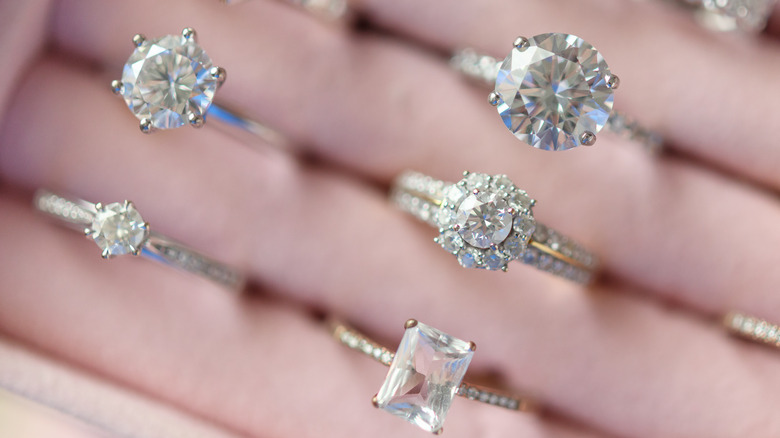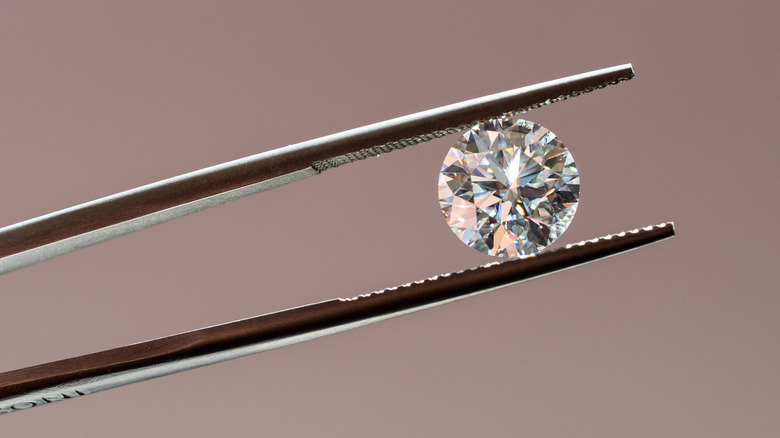What's The Difference Between Moissanite And Diamond Jewelry?
It's a well-known fact that at the center of the luxury jewelry world lies the diamond, one of, if not the most, popular gemstones for engagement rings and other high-end jewelry pieces. According to Keoghans Showcase Jewellers, diamonds are so highly coveted because they are so rare. There is another stone, however, that has similar qualities to a diamond. Moissanite is a mineral stone that has grown in popularity as an alternative to diamonds.
This rise in attention comes at a time when many brides are stepping away from traditional diamond engagement rings (via Truly). Trendy and unique stones are up and coming, and in addition to moissanite, sapphire, morganite, rubies, and cubic zirconia are among the many options available. But while diamonds and moissanite are similar, they also have many differences. Here, we lay them all out, so that you can decide which stone may best suit your needs.
Brilliance and color
Diamonds and moissanite stones are alike in appearance as both are brilliant and opulent, but similarities really end there. While they both occur in nature, moissanite can be harder to find, so it is usually lab-made. "Moissanite is a naturally occurring mineral called silicon carbide, which is very rare and can't be found in nature large enough to be cut into even a one-carat gemstone," president and C.E.O. of Charles & Colvard Don O'Connell tells Brides.
Another difference between the two is their ability to shine. The brilliance of the stones is measured by the amount of light reflected from the interior of the stone. According to Brilliant Earth, moissanite has a refractive index of 2.65 to 2.69, which is actually higher than a natural diamond. Due to this, moissanite is often said to have a disco-ball effect.
Each stone is known to be white, but moissanite may sometimes have subtle base color tones, such as yellow or gray-blue tones, especially the bigger it is. Diamonds, on the other hand, rarely have any traces of color (via Brilliant Earth).
Durability and cost
Don O'Connell, president and CEO of Charles & Colvard, tells Brides that moissanite stones are about one-tenth of the cost of a diamond, making them significantly less expensive. And while moissanite's cost typically depends on the size, the cost of a diamond depends on its carat, shape, color, cut, and clarity.
Many natural stones earn a rating on what is known as the Mohs Scale of Hardness, which measures a mineral's hardness and how well it holds up against surface scratches (via National Park Service). Diamonds are one of the hardest stones, earning a 10 on the scale — the highest rating. This means diamonds have long-lasting durability, which is what makes them a popular choice for engagement rings; they allow for more daily wear. Moissanite, however, is not too far off on the scale, coming in with a rating of 9.5, according to Gema & Co.
While both diamonds and moissanite have several differences, they each offer a look of luxurious beauty. When choosing between the two, it's important to consider appearance, size, durability, shine, and cost to ultimately choose which will best suit your needs.


